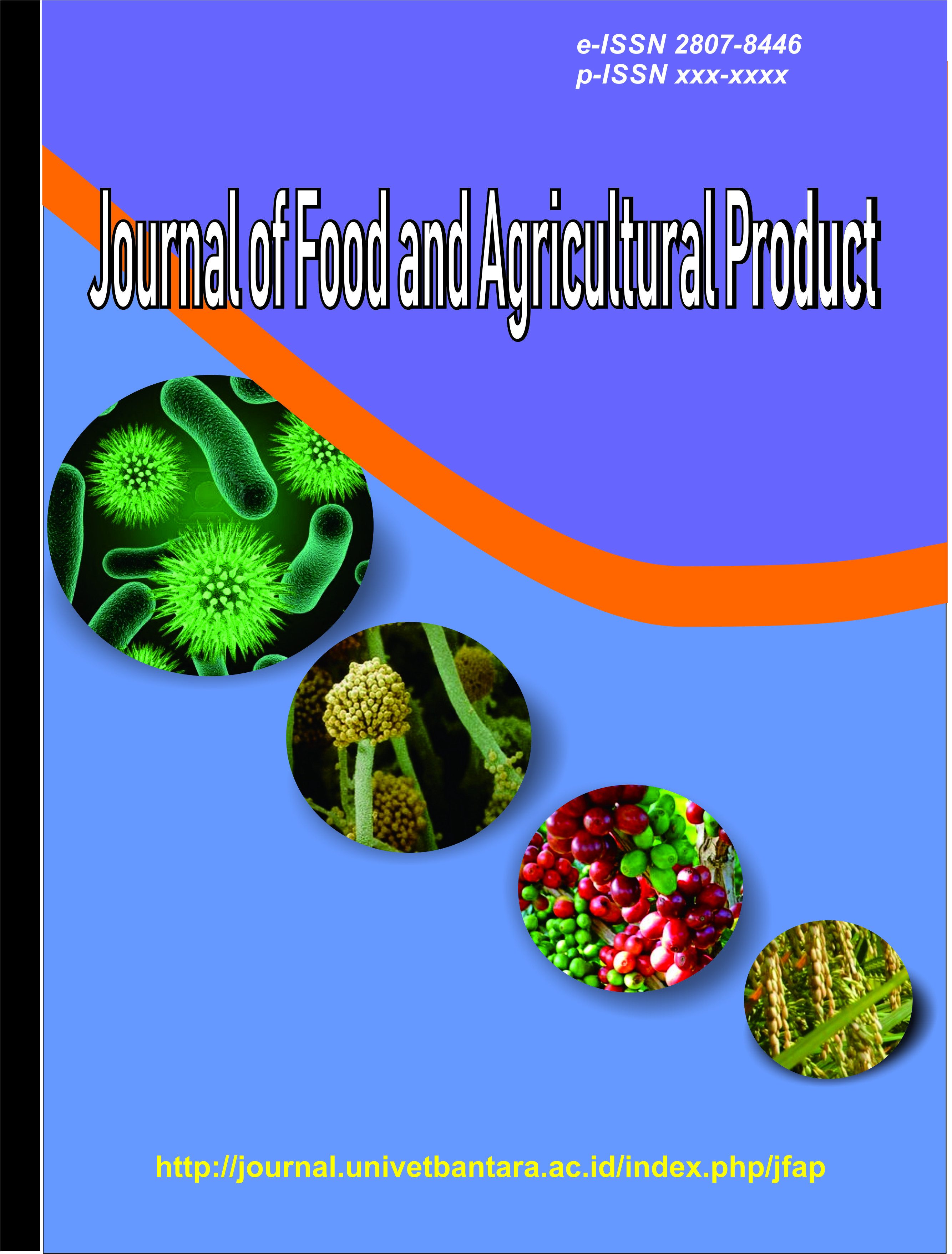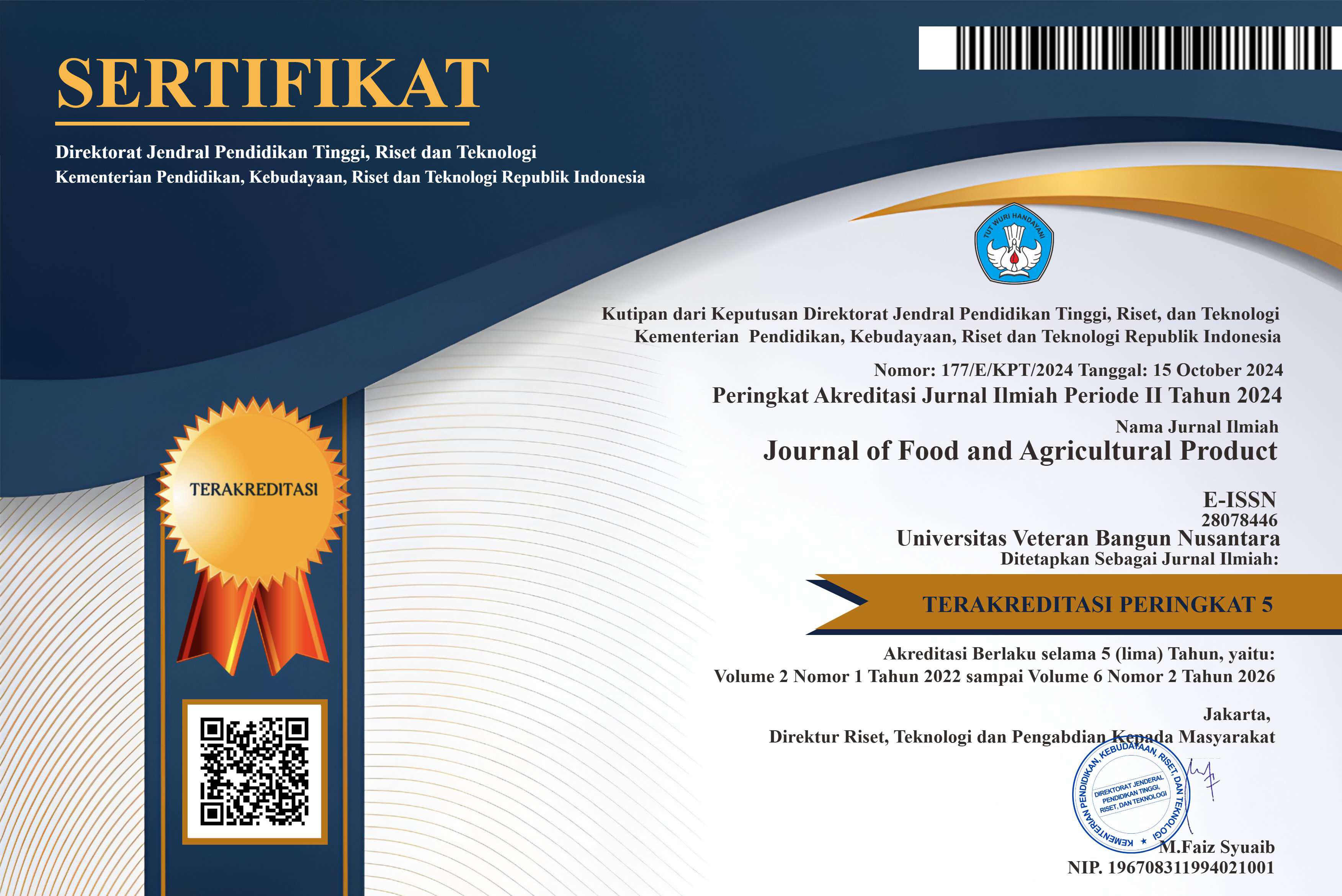Production Process of Puff Pastry Substitute Pumpkin
DOI:
https://doi.org/10.32585/jfap.v5i1.6310Abstract
Puff Pastry is a type of pastry from France made from a mixture of wheat flour, pastry margarine, and water. In this innovation, pumpkin is added to reduce the use of wheat flour by utilizing the availability of pumpkin as a local and functional food. The production process of puff pastry is divided into three stages: making pumpkin puree, making puff pastry, and packaging. The processing of puff pastry with pumpkin substitution is done by adding pumpkin in the form of flour and puree, which provides a new flavor and increases the betacarotene content. The experimental design consists of 6 samples, F1: 5% pumpkin flour, 95% wheat flour; F2: 10% pumpkin flour, 90% wheat flour; F3: 15% pumpkin flour, 85% wheat flour; F4: 40% pumpkin puree, 60% wheat flour; F5: 50% pumpkin puree, 50% wheat flour; and F6: 60% pumpkin puree, 40% wheat flour. A sensory test was conducted to determine consumer preferences and acceptance. The selected sample in the sensory test was puff pastry with 60% pumpkin puree (F6). To determine the final product characteristics, water content tests were performed with three repetitions, as well as a betacarotene content test (315.70 µg/g). Based on the economic analysis, including calculations of HPP (Cost of Goods Sold), BEP (Break-Even Point), ROI (Return on Investment), POT (Payback Period), NPV (Net Present Value), and B/C ratio, the pumpkin-substituted puff pastry production business is profitable and feasible to run.
Keywords: Production Process, Puff Pastry, Yellow Pumpkin
Downloads
Downloads
Published
How to Cite
Issue
Section
License
Copyright (c) 2025 Dini Farida Fasya, Bara Yudhistira

This work is licensed under a Creative Commons Attribution-NonCommercial-ShareAlike 4.0 International License.




